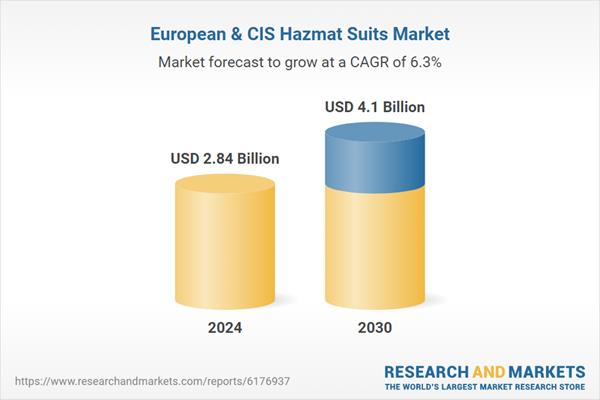Speak directly to the analyst to clarify any post sales queries you may have.
10% Free customizationThis report comes with 10% free customization, enabling you to add data that meets your specific business needs.
Demand is further fueled by the development of advanced materials that offer higher resistance to chemicals, fire, and pathogens, enabling better protection for workers in high-risk environments. Technological innovations, such as lightweight, breathable fabrics and integrated smart sensors for hazard detection, are creating new opportunities for product differentiation and enhanced safety. The market faces challenges including high manufacturing costs, complex certification processes, and limited awareness in certain industrial segments, which can slow adoption.
Market Drivers
Stringent Occupational Safety Regulations
Regulatory frameworks mandating worker safety in hazardous environments have become increasingly stringent across industries handling chemicals, biological agents, and radioactive materials. Organizations are legally obliged to provide appropriate personal protective equipment, and failure to comply can result in significant penalties and reputational damage.This creates a strong and consistent demand for high-quality hazmat suits that meet specific standards and certifications. Compliance requirements also drive companies to adopt advanced protective gear with verified chemical resistance, fire retardancy, and pathogen protection. Industries such as pharmaceuticals, chemical processing, and energy sectors are particularly influenced by these mandates, ensuring that investment in protective equipment remains a top priority. The enforcement of workplace safety norms pushes manufacturers to innovate, ensuring that suits not only comply with legal standards but also offer enhanced comfort, mobility, and durability.
Key Market Challenges
High Manufacturing and Material Costs
Hazmat suits require specialized materials that are resistant to chemicals, pathogens, fire, and radiation, which significantly increases production costs. The use of advanced fabrics, multilayer composites, and integrated sensors or coatings makes suits more expensive than standard protective gear. These high costs limit accessibility for smaller organizations, budget-constrained industries, or emergency response units operating on tight resources. Manufacturers face the challenge of balancing cost with performance, as reducing material quality to cut expenses compromises safety and compliance. The production process also involves stringent quality control, testing, and certification, which adds to overheads and lead times. Variability in material prices, particularly for high-performance polymers and nanocomposites, can further impact pricing stability, affecting demand and procurement planning.Key Market Trends
Ergonomic and Lightweight Designs
Hazmat suits are increasingly being designed for comfort, flexibility, and reduced fatigue, allowing workers to operate efficiently in high-risk environments for extended periods. Lightweight materials, improved mobility, and adjustable fittings enhance user experience without compromising protective performance. Ergonomic designs reduce physical strain, heat stress, and movement limitations, encouraging longer and safer usage.Advanced tailoring and modular components allow customization for specific tasks, such as chemical handling or emergency response, supporting both efficiency and safety. Wearer-centric design is becoming a differentiator in the market, as organizations prioritize comfort alongside compliance. These innovations also facilitate integration with other personal protective equipment, such as respiratory devices, helmets, and gloves. By combining safety with usability, ergonomic suits improve operational productivity while maintaining high protection standards.
Key Market Players
- 3M
- ANSELL LTD
- Dragerwerk AG & Co. KGaA
- DuPont
- Kimberly-Clark Worldwide, Inc.
- Kappler
- Lakeland Inc.
- Respirex International
- MIRA CORPORATION
- MALLCOM INDIA LIMITED
Report Scope:
In this report, Europe & CIS Hazmat Suits Market has been segmented into the following categories, in addition to the industry trends which have also been detailed below:Europe & CIS Hazmat Suits Market, By Application:
- Biohazard & Infection Control
- Chemical Protection
- Radioactive Protection
Europe & CIS Hazmat Suits Market, By Type:
- Level A
- Level B
- Level C
- Level D
Europe & CIS Hazmat Suits Market, By End Use:
- Healthcare
- Chemical
- Oil & Gas
- Firefighting
- Manufacturing
- Military & Law Enforcement
- Construction
- Others
Europe & CIS Hazmat Suits Market, By Country:
- Germany
- Russia
- France
- Spain
- Italy
- United Kingdom
- Poland
- Rest of Europe & CIS
Competitive Landscape
Company Profiles: Detailed analysis of the major companies present in Europe & CIS Hazmat Suits Market.Available Customizations:
With the given market data, the publisher offers customizations according to the company’s specific needs. The following customization options are available for the report.Company Information
- Detailed analysis and profiling of additional market players (up to five).
This product will be delivered within 1-3 business days.
Table of Contents
Companies Mentioned
- 3M
- ANSELL LTD
- Dragerwerk AG & Co. KGaA
- DuPont
- Kimberly-Clark Worldwide, Inc.
- Kappler
- Lakeland Inc.
- Respirex International
- MIRA CORPORATION
- MALLCOM INDIA LIMITED
Table Information
| Report Attribute | Details |
|---|---|
| No. of Pages | 135 |
| Published | September 2025 |
| Forecast Period | 2024 - 2030 |
| Estimated Market Value ( USD | $ 2.84 Billion |
| Forecasted Market Value ( USD | $ 4.1 Billion |
| Compound Annual Growth Rate | 6.3% |
| Regions Covered | Europe, Russia |
| No. of Companies Mentioned | 10 |









